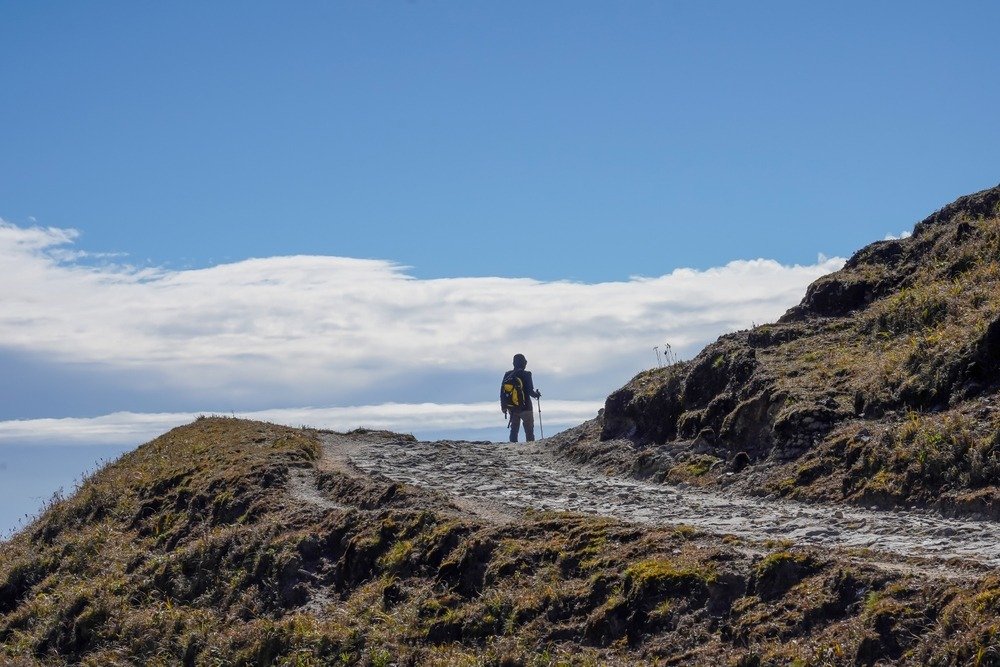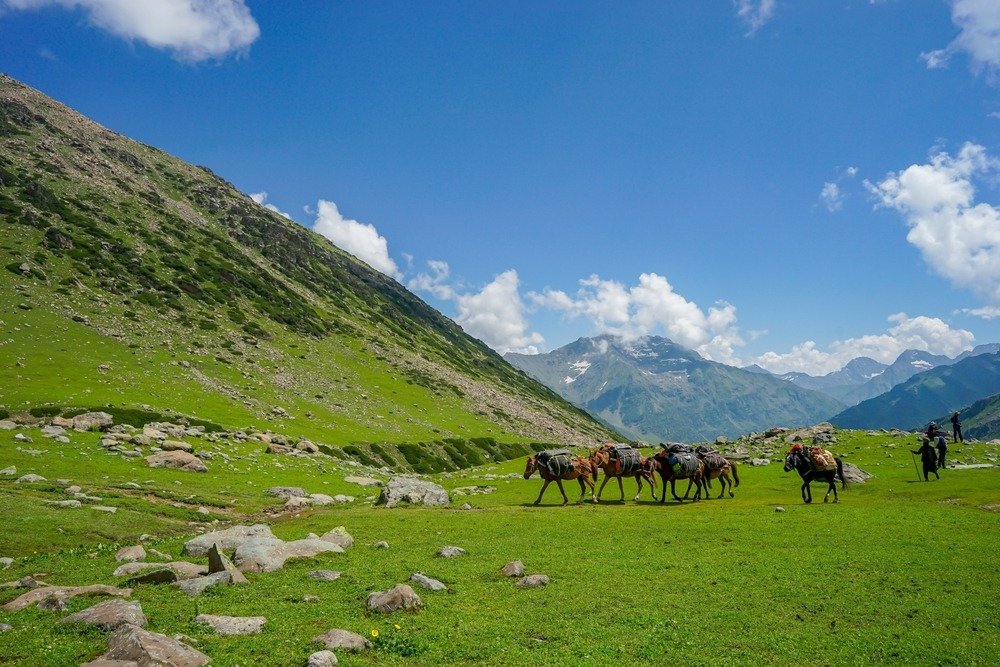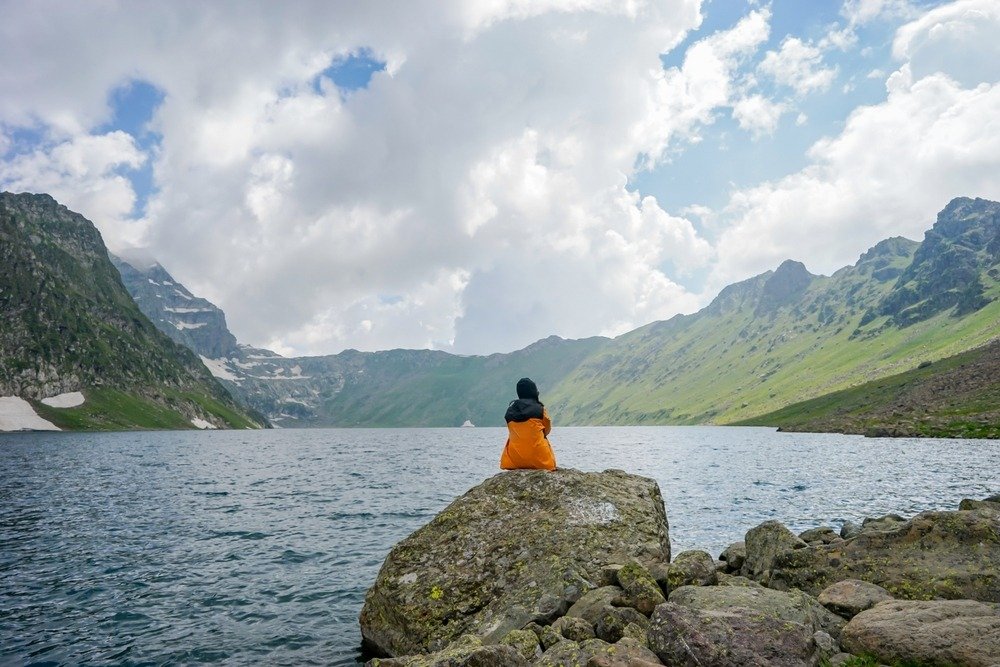A Trek Like No Other: Discover the Magic of the Tarsar Marsar Trek
The Tarsar Marsar Trek is one of those hidden gems that combines everything we love about trekking—majestic landscapes, remote camping spots, and the serenity of the great outdoors. Nestled deep within the Kashmir Valley, this trek feels like stepping into a painting, with its vibrant meadows, crystal-clear alpine lakes, and towering mountains. The best part? You can camp right beside two stunning lakes—Tarsar and Marsar—both of which offer breathtaking reflections of the sky and surrounding peaks. I remember my first time pitching a tent beside Tarsar Lake; it felt like I was living in a postcard.
This trek is perfect for anyone who’s looking to get away from the crowds and experience nature in its purest form. While the landscape is undeniably beautiful, the sense of peace and quiet that envelops you as you walk through the pristine valleys is what makes this trek truly special. You’ll barely come across any other trekkers, and with each step, it feels like you’re discovering a new world. If you’re seeking adventure, solitude, and a deeper connection with nature, then this trek is calling your name.
Getting There: How to Reach the Starting Point of the Tarsar Marsar Trek

Getting to the Tarsar Marsar trek starts with reaching Srinagar, the summer capital of Jammu and Kashmir. From here, the journey takes you to Aru Valley, a small but picturesque hamlet located 12 kilometers from the popular tourist destination, Pahalgam. If you’re driving from Srinagar, it’s roughly a 4-hour scenic drive to Aru. The winding roads offer a sneak peek into the beauty that lies ahead, with stretches of vibrant green valleys, sparkling rivers, and occasional herds of sheep grazing along the way.
If you’re considering the Tarsar Marsar Trek and want a hassle-free experience, I highly recommend going with a professional trekking company to handle all the logistics. One such trusted company is The Searching Souls, known for their expertise in organizing guided treks in the Kashmir Valley. With a team of experienced guides, porters, and well-planned itineraries, The Searching Souls ensures that you enjoy the breathtaking beauty of the trek while they take care of the permits, camping gear, meals, and safety measures.
Aru Valley, the trek’s starting point, is itself a tranquil place surrounded by dense forests and beautiful meadows. As you leave the bustling cities behind and enter Aru, you can feel the air shift, becoming crisp and clean—a welcome contrast to urban life. Whether you arrive by private taxi or shared vehicle, you’ll instantly notice how remote and peaceful the area is. It’s best to spend a night here to acclimatize before starting the trek, allowing yourself some time to soak in the beauty of Aru Valley before setting off on your adventure.
When to Go Tarsar Marsar Trek: Timing is Everything!
Choosing the right time for the Tarsar Marsar trek can make all the difference between an enjoyable experience and a challenging one. The summer months of June through September are the ideal times to go on this walk since by then the snow will have melted and the picturesque meadows and blossoming wildflowers will be exposed. During these months, the weather is generally mild, with daytime temperatures ranging between 15°C and 20°C, making it comfortable for trekking and camping.
I went in early July, and it was the perfect balance—warm enough to enjoy the hike, but still cool enough at night to appreciate a cozy campfire. If you’re lucky, you might catch the tail end of the snow around higher altitudes, adding a touch of magic to the already stunning landscape. However, be prepared for sudden weather changes. While summer is ideal, the mountains can be unpredictable, and occasional rain showers can sweep in without much warning. Carrying rain gear and packing accordingly is crucial to ensure you stay dry and comfortable during your trek.
The Terrain: What to Expect Underfoot
The Tarsar Marsar trek is often classified as a moderate trek, but don’t let that fool you into thinking it’s a walk in the park. Over the course of six to seven days, you’ll cover about 48 kilometers, gradually ascending to altitudes as high as 13,200 feet. The terrain itself is diverse, which keeps things exciting but also demands that you stay on your toes. One minute you’ll be walking through vast green meadows, and the next, you’ll be navigating rocky sections and steep inclines. Some parts of the trail are relatively easy, while others will test your endurance.
What’s really unique about this trek is the constantly changing landscape. You’ll traverse dense pine forests, cross bubbling streams, and climb through high-altitude passes that reward you with panoramic views of the Kashmir Valley. The trails can get steep, especially on the ascent to Shekwas and the climb towards Marsar Lake, but the views make it worth every step. I found the diversity in the terrain to be one of the most memorable aspects of the trek. Every day felt like a new adventure, with the landscape evolving as you ascend higher into the mountains.
Permits and Guidelines: Don’t Forget the Paperwork
While the beauty of the Tarsar Marsar trek is unparalleled, it’s important to remember that this region falls under protected areas, which means you’ll need a permit to trek here. Fortunately, obtaining permits is a relatively easy process, especially if you’re trekking with an organized group or guide who will usually handle the logistics for you. If you’re trekking independently, you’ll need to visit the Forest Department office in Pahalgam or Srinagar to secure your permit. Always carry a valid ID with you, as you’ll need to show this at various checkpoints along the route.
Beyond the permits, the Kashmir region has its own set of rules and guidelines that trekkers are expected to follow. This is a sensitive area, both politically and ecologically, so it’s crucial to respect local customs and adhere to Leave No Trace principles. That means sticking to designated trails, not littering, and respecting the flora and fauna of the region. The locals here are incredibly hospitable, and they deeply care about their environment, so it’s important to leave as little impact as possible to preserve this beautiful trek for future adventurers.
The Right Camping Gear: What You Absolutely Need
When it comes to camping on the Tarsar Marsar trek, having the right gear can make or break your experience. Trust me, I learned this the hard way on my first high-altitude trek. Nights at these altitudes can get cold—often dipping below freezing—even during the summer months, so it’s essential to pack wisely. First and foremost, a good-quality tent that’s weather-resistant is a must. You’ll need something sturdy enough to handle potential rain or wind, as well as cold nights by the lakes. If you’re not with a trekking company that provides tents, invest in one designed for alpine camping.
Your sleeping bag is equally important. Make sure you have a sleeping bag rated for sub-zero temperatures, even if you’re trekking in July. The night chill near the lakes can catch you off guard, and the last thing you want is to be shivering inside your tent. Also, pack trekking poles, especially for the steeper sections of the trek. These will help with balance and reduce the strain on your knees. I also swear by my insulated water bottle—keeping water from freezing at night, and great for sipping hot tea in the chilly mornings!
Packing Smart: The Ultimate Camping Checklist
Packing for the Tarsar Marsar trek is all about finding that balance between carrying what you need and not overloading your backpack. I quickly learned that every ounce counts when you’re hiking at high altitudes, so it’s crucial to pack light but smart. For clothing, the key is layering. Start with moisture-wicking base layers, add insulating mid-layers, and finish with a waterproof jacket for protection against rain or wind. You’ll also want to bring along a down jacket for the cold evenings and early mornings when the temperature plummets.
In addition to clothing, a sturdy pair of trekking boots is a must. The terrain can be uneven, rocky, and sometimes wet, so make sure your boots are waterproof and offer good ankle support. Don’t forget to pack extra socks (I always bring at least two pairs of thick wool socks for the colder nights). Other essential items include a headlamp, as there’s no electricity at the campsites, a first aid kit, and enough snacks to keep your energy up throughout the day. High-calorie snacks like nuts, energy bars, and chocolates will keep you going during long stretches between meals.
Camping by the Lakes: Tarsar and Marsar

Camping by the pristine lakes of Tarsar and Marsar is an experience that will stick with you long after the trek is over. Tarsar Lake is the first of the two, and setting up camp here is nothing short of magical. The lake is a stunning shade of blue, nestled in a green valley surrounded by towering mountains. In the evening, as the sun sets behind the peaks, the lake mirrors the fiery sky, creating a scene that feels almost surreal. There’s something incredibly peaceful about camping here, with nothing but the sound of the wind and the gentle lapping of the water to keep you company.
A few days later, you’ll reach Marsar Lake, which has a more mysterious, almost eerie vibe. The lake is often covered in mist, adding to its allure. Camping at Marsar is a bit more rugged due to its higher altitude and the colder weather, but the experience is equally rewarding. It feels like you’ve truly left the world behind and entered a realm of untouched wilderness. Both lakes offer pristine campsites, but make sure you camp at least 200 meters away from the water to preserve the environment and avoid disturbing the delicate ecosystem.
Stay Safe: Camping and Trekking Safety Tips
Safety should always be a top priority when trekking in remote and high-altitude areas like Tarsar Marsar. First and foremost, altitude sickness is a real concern, especially as you ascend beyond 10,000 feet. Shortness of breath, headaches, nausea, and dizziness are some of the symptoms. The key to preventing altitude sickness is pacing yourself, staying hydrated, and not pushing too hard on the steeper sections. If you start feeling unwell, the best course of action is to descend to a lower altitude immediately.
Wildlife, while not a major concern, is still something to be mindful of. The Kashmir Valley is home to various animals, including Himalayan marmots and foxes, which you might spot along the way. Keep your food stored securely to avoid attracting any curious creatures to your campsite. Additionally, weather conditions can change rapidly in the mountains, so always carry extra layers, rain protection, and a fully charged phone or satellite device for emergencies. While the trek is remote, staying connected to local guides and following weather forecasts can help you avoid any nasty surprises.
Conclusion: Why Tarsar Marsar Should Be Your Next Adventure
In a world full of over-tourism and crowded destinations, the Tarsar Marsar Trek offers a breath of fresh air—literally and figuratively. It’s not just the stunning scenery that makes this trek stand out, but the solitude, the sense of adventure, and the profound connection to nature that you’ll feel as you camp beside those pristine lakes. This trek offers something for everyone, regardless of experience level or desire for a challenge. The journey itself, with its diverse landscapes and ever-changing terrain, will keep you engaged from start to finish.
And then there are the moments that make it all worthwhile—the quiet mornings by the lake, the satisfaction of completing a steep climb, and the camaraderie of fellow trekkers around a campfire. For me, the Tarsar Marsar Trek wasn’t just a physical challenge, but a mental and spiritual journey, one that reminded me of the importance of disconnecting from the chaos of daily existence and reestablishing a connection with nature. If you’re ready for an adventure that will leave you feeling refreshed, inspired, and completely in awe, then Tarsar Marsar should be at the top of your trekking list.
Frequently Asked Questions (FAQs)
- How fit do I need to be for the Tarsar Marsar Trek?
This hike requires a moderate degree of fitness. It will be beneficial to prepare beforehand with frequent walking, aerobics, and strength training. The trek involves both gradual and steep inclines. - What kind of weather can I expect?
Summer weather is generally pleasant, with warm days and cool nights. However, the weather can be unpredictable, with sudden rains and cold winds, especially at higher altitudes. - Does the hike require hiring a guide?
Even though the paths are usually clearly defined, it is nevertheless advised to hire a local guide, particularly for those who are trekking in the area for the first time. They are familiar with the terrain and can help navigate any challenges. - Can I complete the trek if I’ve never camped before?
Absolutely! The trek is suitable for beginners, but it’s advisable to go with an experienced guide or a trekking group if you’ve never camped or trekked at high altitudes before. - What should I do if I get altitude sickness?
Descend right away to a lower altitude and rest if you suffer from altitude sickness symptoms like headaches, nausea, or dizziness. Stay hydrated and pace yourself throughout the trek.
Please Also Read – What Gear Do You Really Need for the Rupin Pass Trek?



